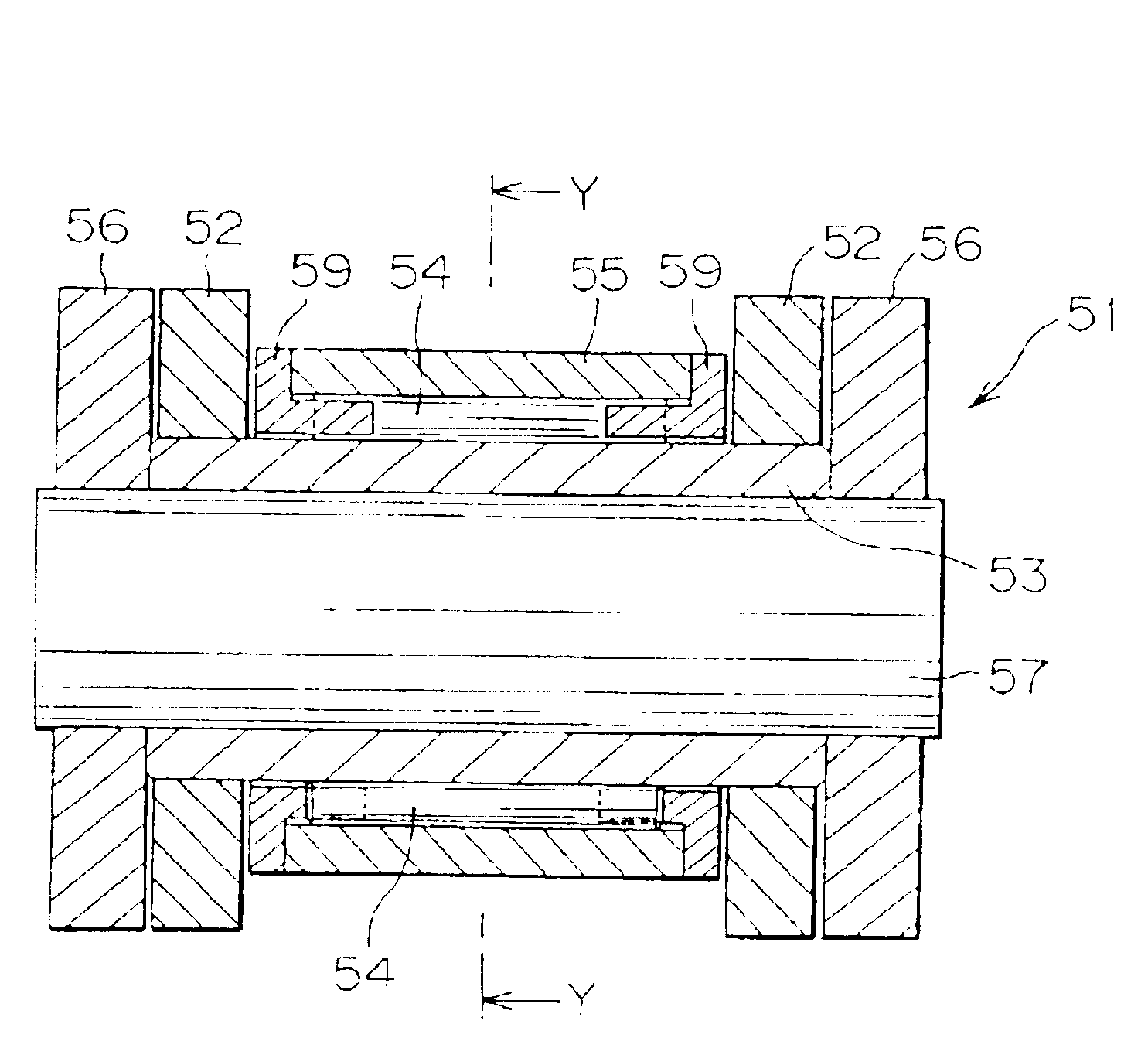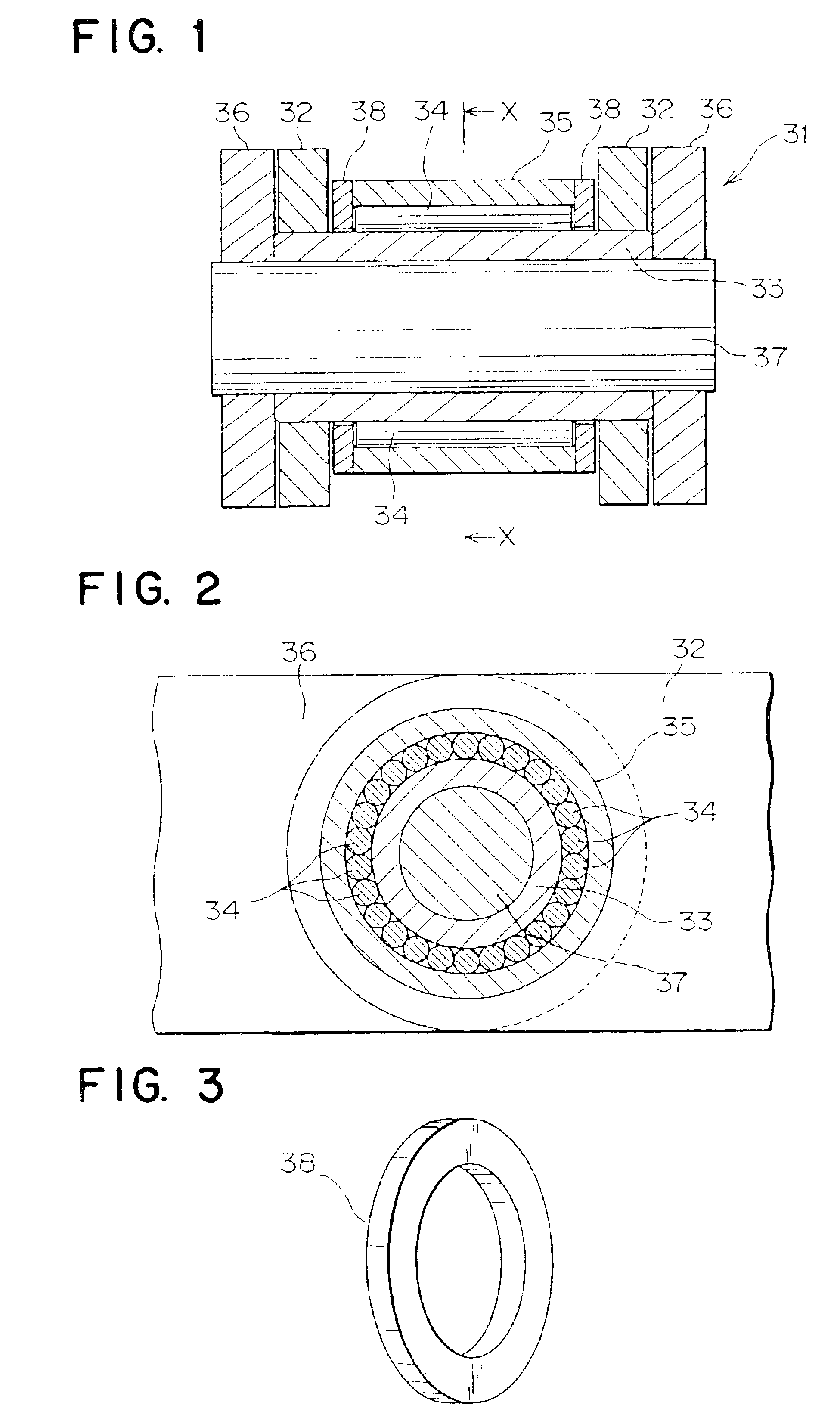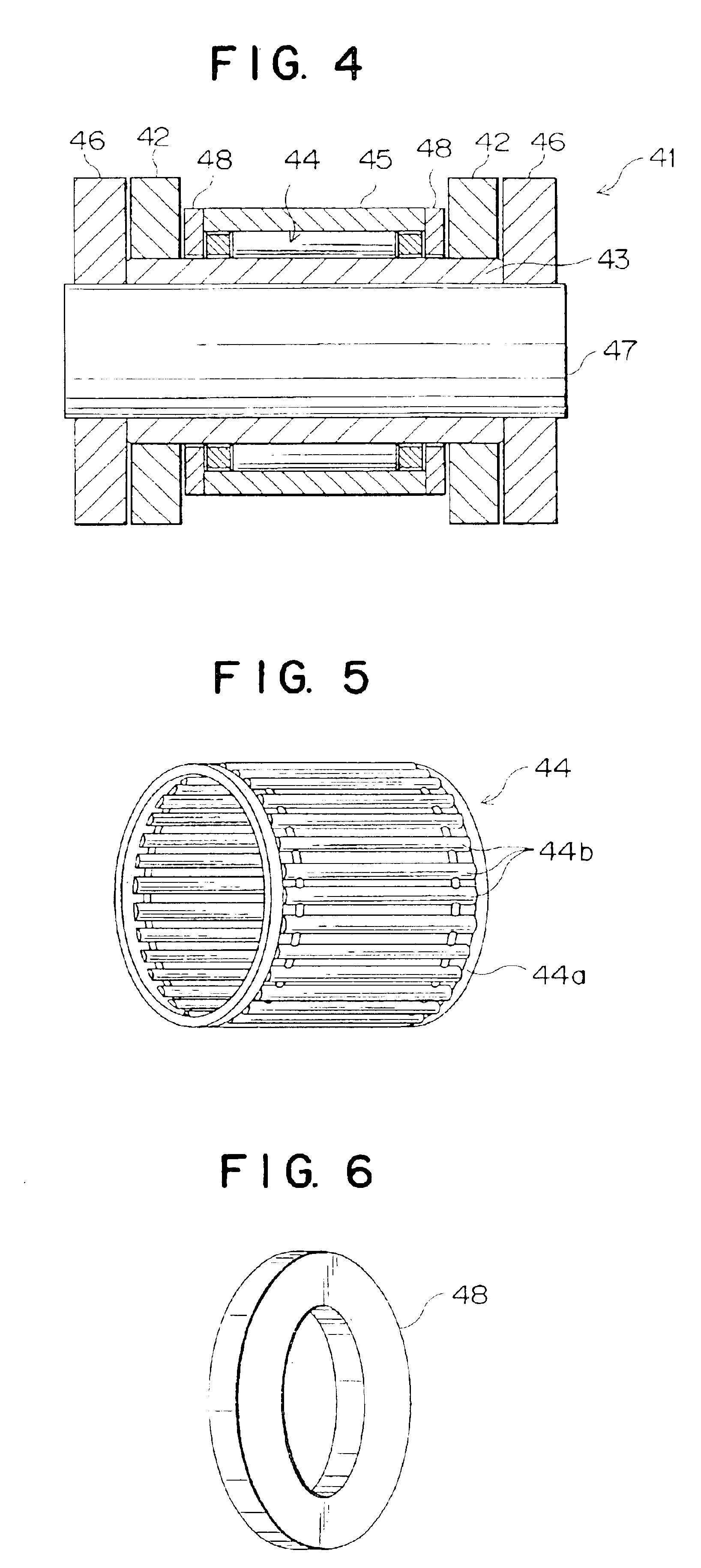Chain
a technology of chain and chain, applied in the field of chains, can solve the problems of chain snakes, time-consuming grinding process, and substantial increase in the cost of equipment which utilizes chains, and achieve the effects of reducing weight, simplifying chain guidance, and superior thrust load performan
- Summary
- Abstract
- Description
- Claims
- Application Information
AI Technical Summary
Benefits of technology
Problems solved by technology
Method used
Image
Examples
first embodiment
the invention will be described with reference to FIGS. 1, 2 and 3.
In a chain 31 shown in FIG. 1, two inner link plates 32, spaced from, and in parallel relationship to, each other, are connected by a hollow, cylindrical bushing 33. A plurality of rolling members 34 is arranged on the outer circumferential surface of the bushing 33, and a cylindrical roller 35, disposed between the pair of inner link plates 32, surrounds the rolling members 34. As shown in FIG. 2, the rolling members 34 are arranged next to one another, without a holder. Two outer link plates 36 are arranged on the outsides of the pair of inner link plates 32, in spaced, parallel relationship to each other. The outer link plates 36 are connected to each other by a pin 37, which extends through the bushing 33. The inner and outer link plates on each side extend in the longitudinal direction of the chain, and overlap one another as in a conventional roller chain.
As shown in FIG. 1, thrust bearing plates 38 are arrange...
second embodiment
the invention will now be described with reference to FIGS. 4, 5 and 6.
In a chain 41 shown in FIG. 4, two inner link plates 42, spaced, and in parallel relationship to each other, are connected to each other by a hollow, cylindrical bushing 43. Rolling members 44, with a holder, are arranged on the outer circumferential surface of the bushing 43, and a cylindrical roller 45, surrounding the rolling members 44 with the holder, is disposed between the inner link plates 42. As shown in FIG. 5, the structure between the bushing 43 and the roller is composed of a cylindrical holder 44a and a plurality of rolling members 44b. The rolling members 44b are rotatably held in window holes in the holder 44a. A pair of outer link plates 46, in spaced, parallel relationship to each other, are arranged on the outsides of the inner link plates 42. The outer link plates 46 are connected to each other by a pin 47, which extends through the bushing 43.
As shown in FIG. 4, thrust bearing plates 48 are a...
third embodiment
the invention will be described with reference to FIGS. 7, 8 and 9.
In the chain 51 shown in FIG. 7, inner link plates 52, spaced from each other, and in parallel relationship to each other, are connected by a hollow, cylindrical bushing 53. A plurality of rolling members 54 is arranged on the outer circumferential surface of the bushing 53, and a cylindrical roller 55, surrounding the plurality of rolling members 54, is disposed between the pair of the inner link plates 52, As shown in FIGS. 7 and 8, each of the rolling members 54 is held rotatably by a substantially ring-shaped holder 59. Outer link plates 56, in spaced, parallel relationship to each other are arranged on the outsides of the pair of inner link plates 52. The outer link plates 56 are connected to each other by a pin 57, which extends through bushing 53.
Substantially ring-shaped holders 59 are arranged between the inside surfaces of the pair of inner link plates 52 at both ends of the roller 55. As shown in FIGS. 9(A...
PUM
 Login to View More
Login to View More Abstract
Description
Claims
Application Information
 Login to View More
Login to View More - R&D
- Intellectual Property
- Life Sciences
- Materials
- Tech Scout
- Unparalleled Data Quality
- Higher Quality Content
- 60% Fewer Hallucinations
Browse by: Latest US Patents, China's latest patents, Technical Efficacy Thesaurus, Application Domain, Technology Topic, Popular Technical Reports.
© 2025 PatSnap. All rights reserved.Legal|Privacy policy|Modern Slavery Act Transparency Statement|Sitemap|About US| Contact US: help@patsnap.com



